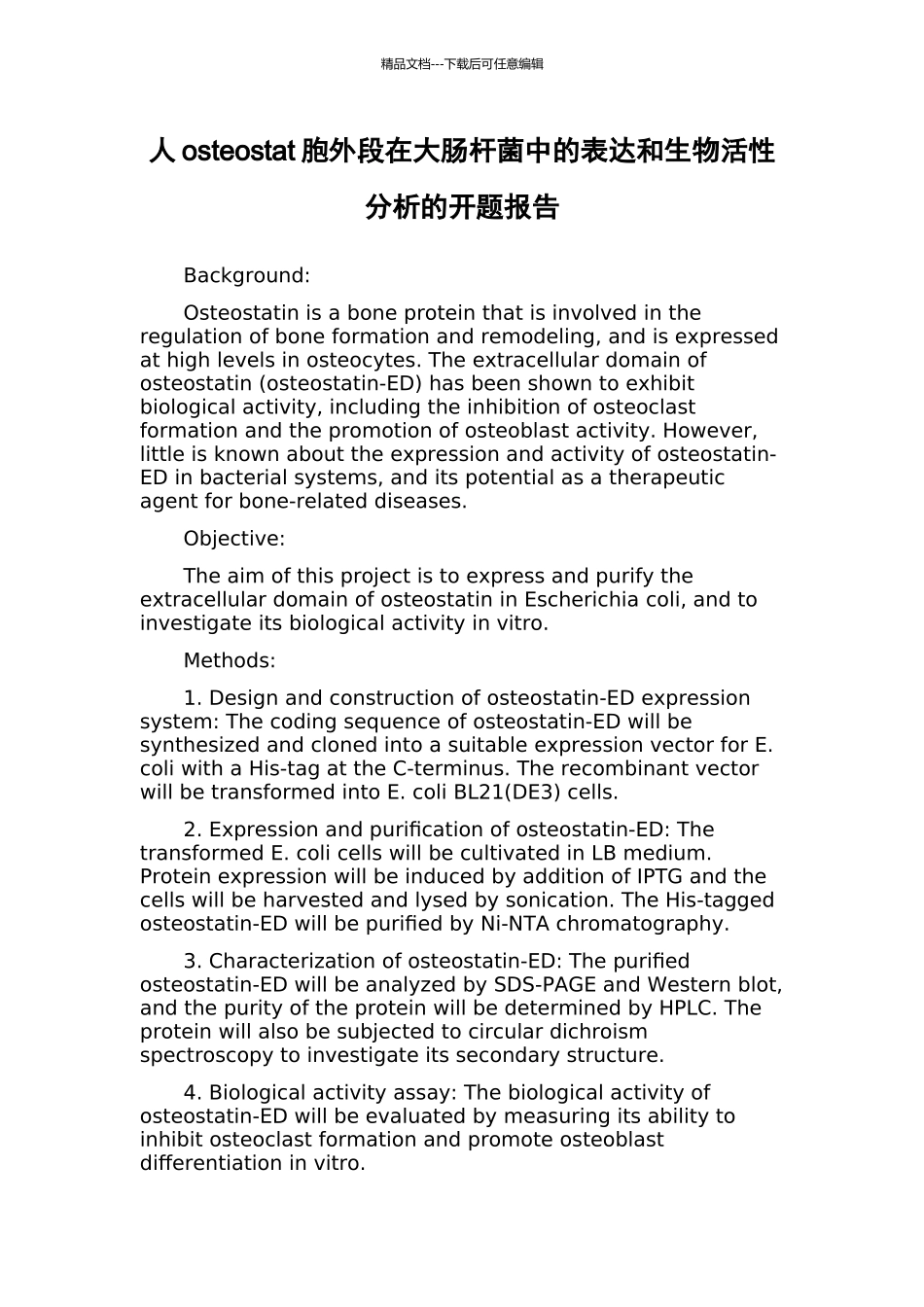精品文档---下载后可任意编辑人 osteostat 胞外段在大肠杆菌中的表达和生物活性分析的开题报告Background:Osteostatin is a bone protein that is involved in the regulation of bone formation and remodeling, and is expressed at high levels in osteocytes. The extracellular domain of osteostatin (osteostatin-ED) has been shown to exhibit biological activity, including the inhibition of osteoclast formation and the promotion of osteoblast activity. However, little is known about the expression and activity of osteostatin-ED in bacterial systems, and its potential as a therapeutic agent for bone-related diseases.Objective:The aim of this project is to express and purify the extracellular domain of osteostatin in Escherichia coli, and to investigate its biological activity in vitro.Methods:1. Design and construction of osteostatin-ED expression system: The coding sequence of osteostatin-ED will be synthesized and cloned into a suitable expression vector for E. coli with a His-tag at the C-terminus. The recombinant vector will be transformed into E. coli BL21(DE3) cells.2. Expression and purification of osteostatin-ED: The transformed E. coli cells will be cultivated in LB medium. Protein expression will be induced by addition of IPTG and the cells will be harvested and lysed by sonication. The His-tagged osteostatin-ED will be purified by Ni-NTA chromatography.3. Characterization of osteostatin-ED: The purified osteostatin-ED will be analyzed by SDS-PAGE and Western blot, and the purity of the protein will be determined by HPLC. The protein will also be subjected to circular dichroism spectroscopy to investigate its secondary structure.4. Biological activity assay: The biological activity of osteostatin-ED will be evaluated by measuring its ability to inhibit osteoclast formation and promote osteoblast differentiation in vitro.精品文档---下载后可任意编辑Expected Results:We expect to successfully express and purify osteostatin-ED in E. coli, and obtain a highly purified protein with the correct secondary structure. The purified protein is expected to exhibit biological activity in vitro, and demonstrate inhibition of osteoclast formation and promotion of osteoblast differentiation.Contribution:This study will provide valuable insights into the expression and biological activity of osteostatin-ED in bacterial systems, and may provide a potential therapeutic agent for bone-related diseases. It will also contribute to the understanding of the structure-function relationship of osteostatin-ED, and improve our knowledge of osteocyte-mediated bone regulation.

